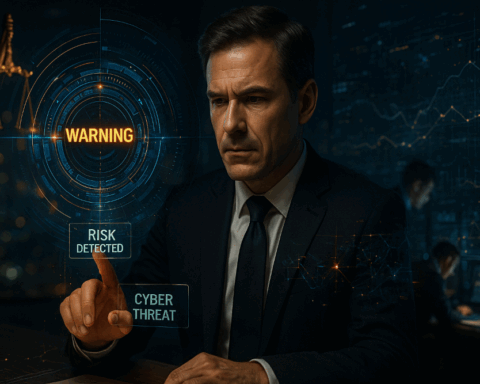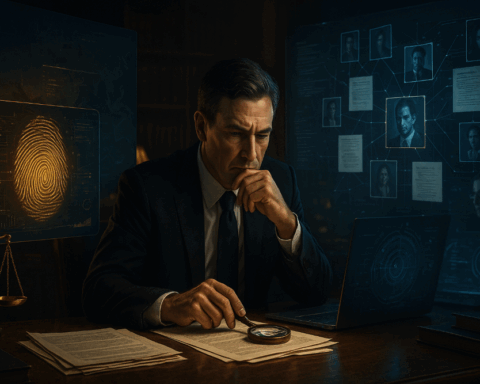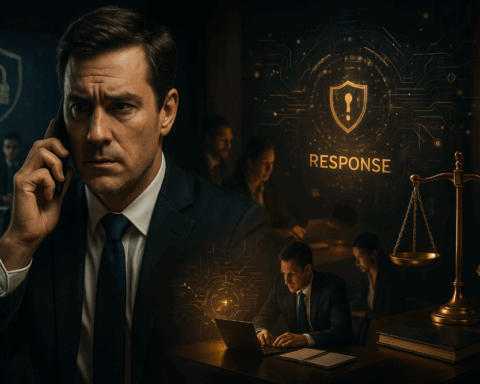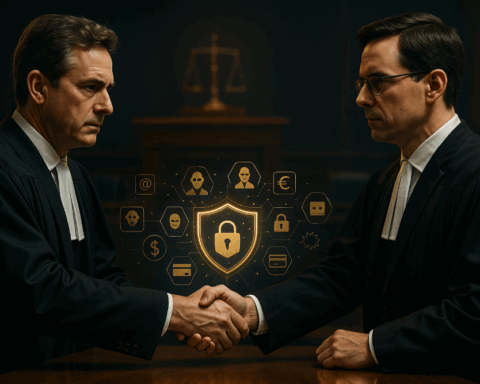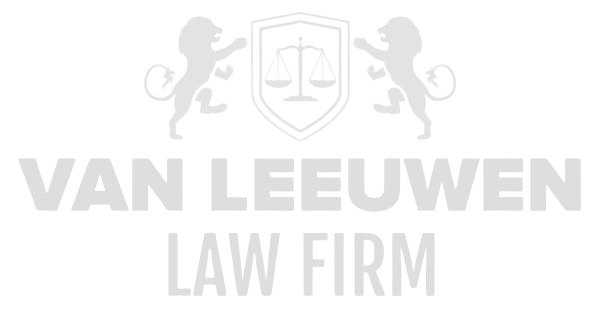In today’s digital world, businesses operate in an increasingly complex environment where privacy, data protection, and cyberresponsibility play a crucial role. Continuous technological advancements, combined with increasingly stringent regulations and heightened societal expectations, have led to an explosive increase in risks related to data breaches, cyberattacks, and violations of privacy laws. It is not only IT systems that come under pressure, but also the integrity, credibility, and legal resilience of organizations as a whole. In this domain, privacy & cyberresponse forms a core activity of strategic importance, where legal expertise, forensic insight, and technological mastery merge into an inseparable whole. It is not merely about reactive measures once damage has been done, but rather about proactively protecting the interests of clients at the intersection of technology and law.
National and international corporations, their executives and supervisory boards, as well as government organizations, often find themselves at the center of legal and public storms when confronted with allegations of financial-economic crimes. These accusations can severely disrupt daily operations, seriously endanger business continuity, and cause significant reputational damage that can undo years of effort. The loss of trust among stakeholders, the impact on stock value, the threat of sanctions, and the potential personal liability of executives turn a cyber incident or privacy dispute into a crisis with far-reaching legal, strategic, and human dimensions. In this context, specialized legal support in privacy and cyberresponse has become indispensable—not merely as a safety net, but as an integral part of risk management and governance for every organization.
Strategic Protection Against Digital Threats
The legal landscape surrounding privacy and cybersecurity is complex, fragmented, and constantly evolving. Regulations such as the General Data Protection Regulation (GDPR), the NIS2 Directive, and sector-specific requirements like DORA impose very high standards for compliance and governance of personal data and cybersecurity. Organizations must demonstrate that they have developed, implemented, and maintained adequate policies to comply with these rules. Merely possessing legal documents or a privacy statement is insufficient; a profound understanding of underlying processes, technologies, and risks is required.
A thorough legal analysis of existing policies, data collection practices, processor agreements, and internal governance structures is necessary to timely identify legal vulnerabilities. This means that all relevant contractual, operational, and digital facets of the organization must be scrutinized, including the role of third parties, the software applications used, and access rights to sensitive information. When this analysis is not sufficiently thorough, blind spots emerge in the security policy that malicious actors can exploit with far-reaching consequences.
In this regard, privacy & cyberresponse must be approached as a multidisciplinary discipline, where legal expertise goes hand in hand with forensic knowledge, IT audit skills, and a strategic vision for crisis management. By acting from this integrated perspective, risks can not only be controlled but even transformed into competitive advantages. Organizations that are demonstrably compliant, transparent, and resilient enjoy greater trust from customers, regulators, and investors—an invaluable asset in the digital age.
Legal Control of Cyber Incidents
A data breach, system intrusion, or cyberattack often constitutes a legal turning point for an organization. At that moment, directors are confronted with immediate reporting obligations to regulators such as the Data Protection Authority, the threat of sanctions, potential civil claims from affected parties, and criminal investigations by judicial authorities. Immediate, strategically thought-out action is essential in this phase to limit legal damage and manage reputational harm.
The legal framework in which these incidents are assessed is extremely strict and requires detailed documentation of the incident response, decision-making within the crisis team, and security measures taken prior to the incident. Every decision—from reporting to the regulator to informing those involved—must be legally justifiable, based on a precise risk analysis and clear accountability. A misjudgment can lead to fines amounting to millions of euros, criminal prosecution, or the loss of licenses.
In this process, legal guidance is not limited to mere advice but includes coordinating crisis communication, negotiating with regulators, and involvement in forensic technical investigations. Only by fully integrating legal, technical, and communication response strategies can a decisive and effective approach to cyber incidents be realized, one that respects both the interests of the organization and the rights of those involved.
Reputation Recovery After Incidents
After an incident, an organization faces the immense task of regaining trust. This requires more than just fixing the technical malfunction or legally resolving claims. Trust is an intangible asset that must be carefully rebuilt on the foundations of transparency, accountability, and renewed control mechanisms. In this phase, legal guidance plays a key role in restructuring governance and redesigning compliance procedures.
Drafting recovery plans, revising internal control measures, and conducting discussions with regulators require thorough legal underpinning. These processes demand a strategic narrative in which mistakes are acknowledged, improvement measures concretely defined, and future risks demonstrably mitigated. This approach not only contributes to restoring trust but also strengthens the organization’s resilience for the future.
Reputation recovery also calls for legal support in public communications and stakeholder management. Carefully crafting statements, aligning internal and external messages, and managing legal risks in press contacts are not peripheral matters but crucial elements of the post-incident strategy. Maintaining legal control here can prevent secondary damage, lawsuits, and renewed escalation.
Individual Liability of Directors
In the event of serious privacy or cyber incidents, the focus often shifts from the organization as a legal entity to individual directors and supervisory board members. Increasingly, these natural persons are held jointly liable for negligent behavior, insufficient oversight, or flawed decision-making. This poses an existential threat to their professional reputation, financial situation, and further career.
The legal assessment of directors’ liability requires a detailed reconstruction of their role, involvement, knowledge level, and timely actions before and during the incident. Every decision, meeting minute, and email can be used as evidence in proceedings. Legal assistance in this phase must therefore be aimed at both the substantive defense of the involved director and the protection of his or her personal and professional interests.
The complex intertwining of governance obligations, supervisory duties, and information obligations demands a specialized approach that not only defends the director but also advises strategically. Attention must be paid to possible conflicts between the interests of the organization and those of the individual director. Legal customization is indispensable to prevent individual liability from becoming a derivative risk of structural shortcomings within the organization.
Internal Investigation and Forensic Reconstruction
In serious incidents, it is almost always necessary to conduct a thorough internal investigation into the causes, course, and impact. Such an investigation must encompass not only technological or organizational aspects but also a legal review of decision-making, compliance, and adherence to laws and regulations. A forensic-legal reconstruction serves as the foundation for recovery, liability assessment, and consultations with regulators.
A legally directed investigation focuses on identifying shortcomings in processes, contracts, governance, and oversight. It is important that the investigation adheres to principles of independence, transparency, and legal proportionality. These principles determine the credibility of the findings and the willingness of regulators to consider alternative sanction models such as recovery agreements instead of fines.
Collaboration between forensic investigators, lawyers, and IT specialists is essential here. Legal coordination ensures that collected evidence is also usable in court, that employees’ rights are respected, and that the process meets the requirements of good governance. Only by tightly guarding this legal framework can an investigation contribute to actual improvement and legal security.
International Dimensions and Cross-Border Challenges
Many organizations operate in an international environment where data freely crosses borders. This creates significant legal challenges, ranging from differences in privacy laws per jurisdiction to varying requirements from regulators in case of incidents. Organizations that do not anticipate this complexity risk simultaneous prosecution in multiple countries, leading to escalation and reputational damage on a global scale.
The legal framework for cross-border privacy and cyber incidents is extremely complex and requires in-depth knowledge of international treaties, bilateral agreements, and national laws. Legal assistance must extend to harmonizing response strategies, coordinating notifications, and managing international legal exposure. Language barriers, cultural differences, and varying compliance expectations also play a role that must be legally addressed.
Anticipating these challenges requires proactive strategies such as drafting international reporting protocols, developing uniform incident response plans, and implementing legal escalation models per jurisdiction. Only organizations with this robust legal infrastructure can operate effectively in a global digital economy without risking fragmentation and escalation at every incident.
Supervisory Interactions and Legal Dialogue
A fundamental part of privacy and cyberresponse is the legal interaction with regulators. This relationship requires a careful, legally substantiated strategy focused on transparency, trust, and legal persuasiveness. In times of incidents or investigations, legal arguments play a central role in shaping the narrative communicated to regulators.
A legally well-thought-out dialogue with regulators starts with understanding their assessment frameworks, priorities, and expectations. A strategy is then built in which legal positions, factual reconstructions, and recovery measures are presented coherently. The aim is not only to prevent sanctions but to create trust in the organization’s ability to improve structurally.
Effective legal interaction requires preparation, positioning, and the correct use of evidence and policy documents. Legal consistency is essential: positions may not conflict with previous statements, internal documents, or publicly communicated stances. By legally anticipating and steering this, space for dialogue rather than confrontation arises.
Compliance Enhancement and Future-Oriented Restructuring
After incidents, a unique opportunity arises to legally strengthen the organization. This phase is not only about recovery but about structural reform of processes, systems, and legal frameworks. This requires recalibrating the entire legal compliance framework, including contracts, internal policies, governance structures, and reporting mechanisms.
The legal restructuring process begins with a gap analysis of existing compliance structures. From this follows a redesign aligned with current legal requirements, supervisory expectations, and best practices. Legal guidance ensures that this design is legally robust, feasible, and future-proof, with sufficient flexibility to respond to future legislation and technological developments.
Legal strengthening of compliance also demands education, culture change, and accountability. Legal professionals play a role as designers of new accountability structures, advisors to management, and facilitators of change processes. Only through this structural legal reinforcement will an organization not only recover but emerge stronger and more resilient from the crisis.


